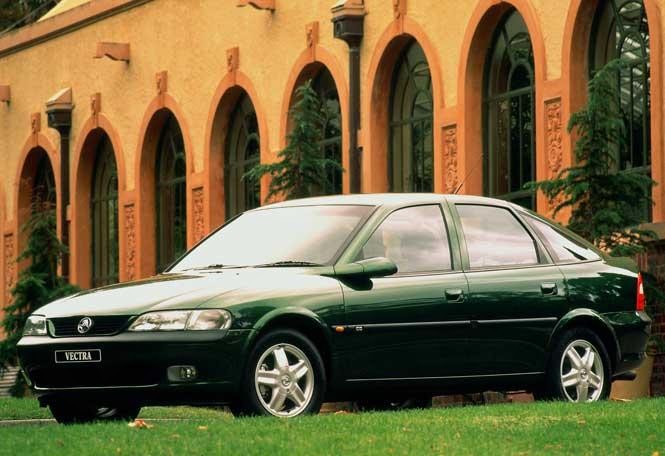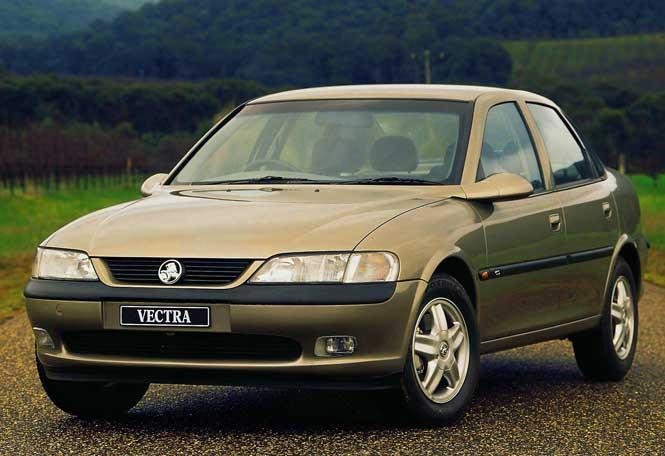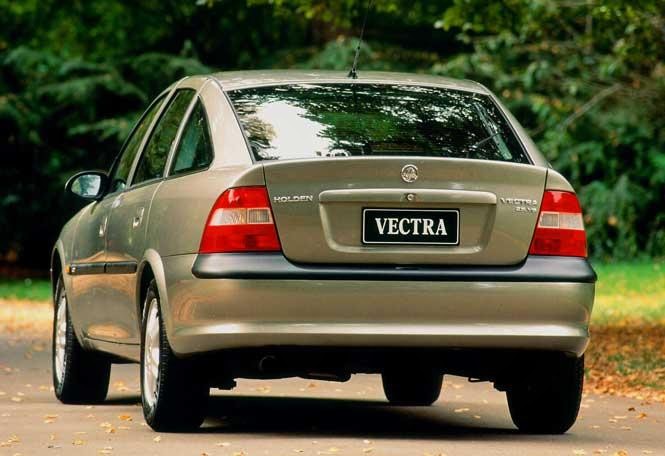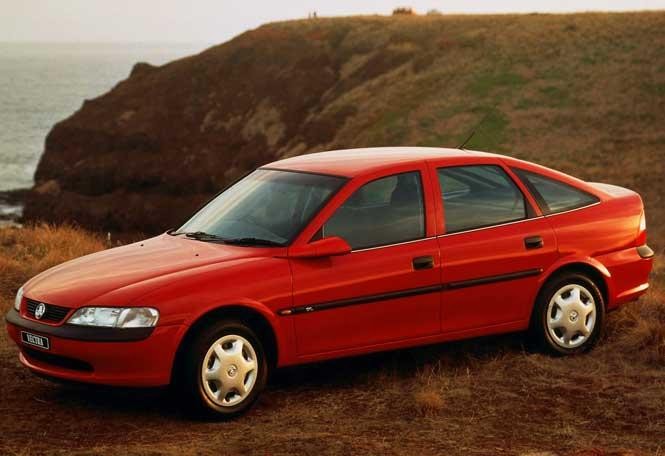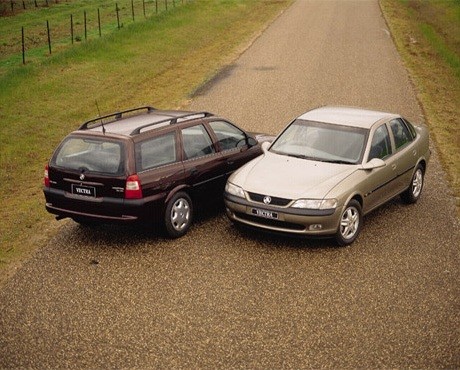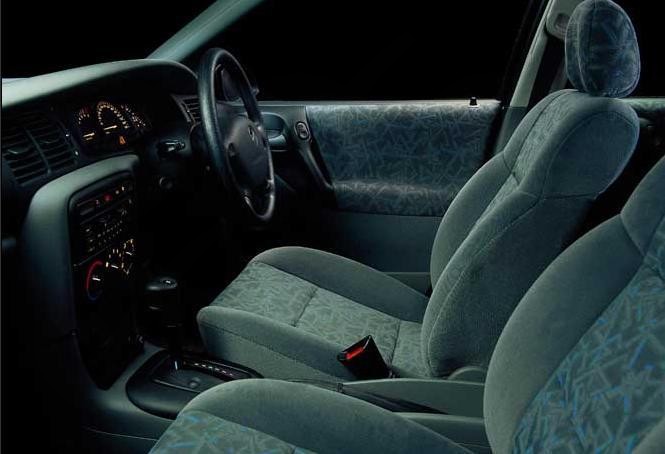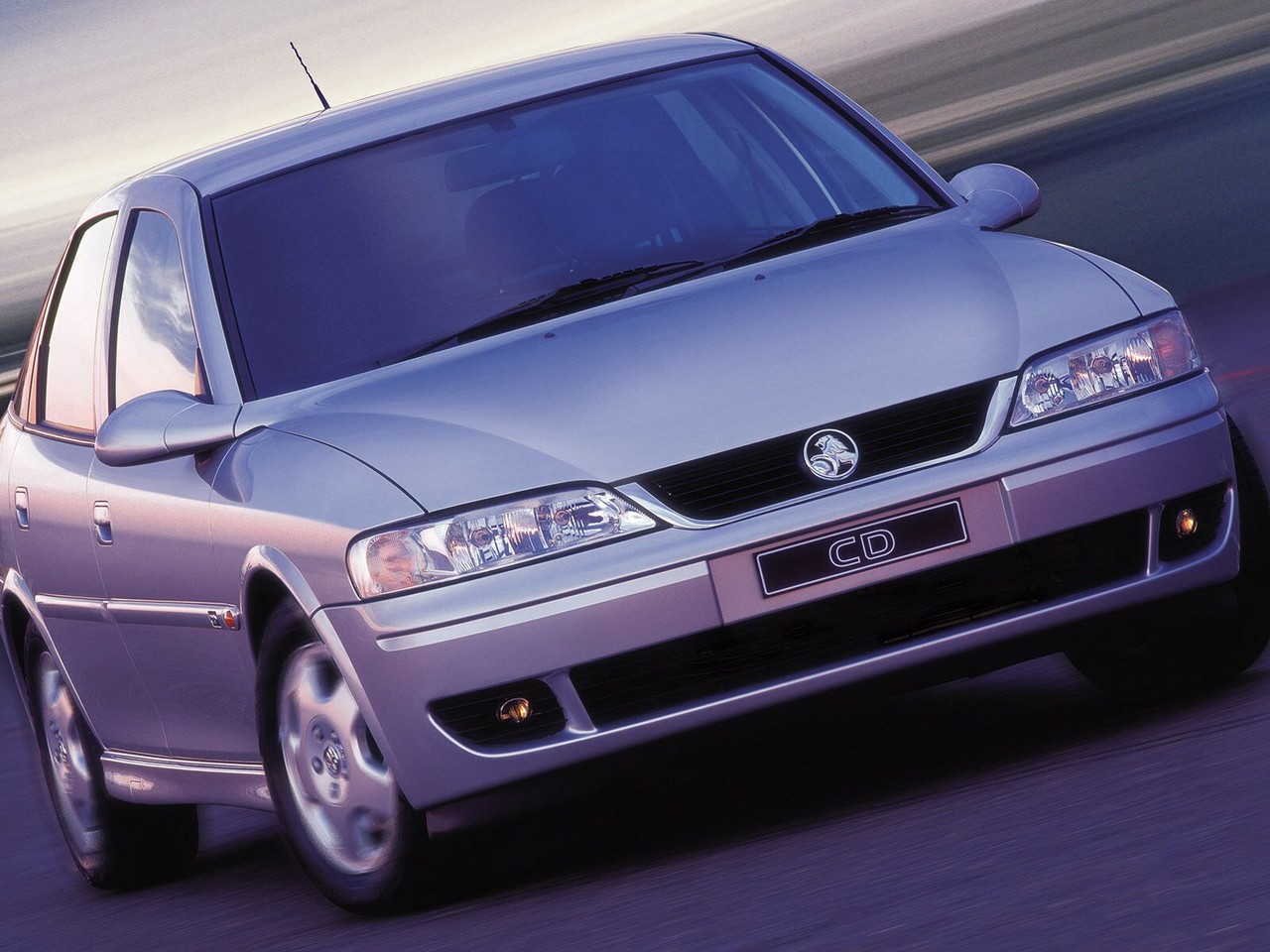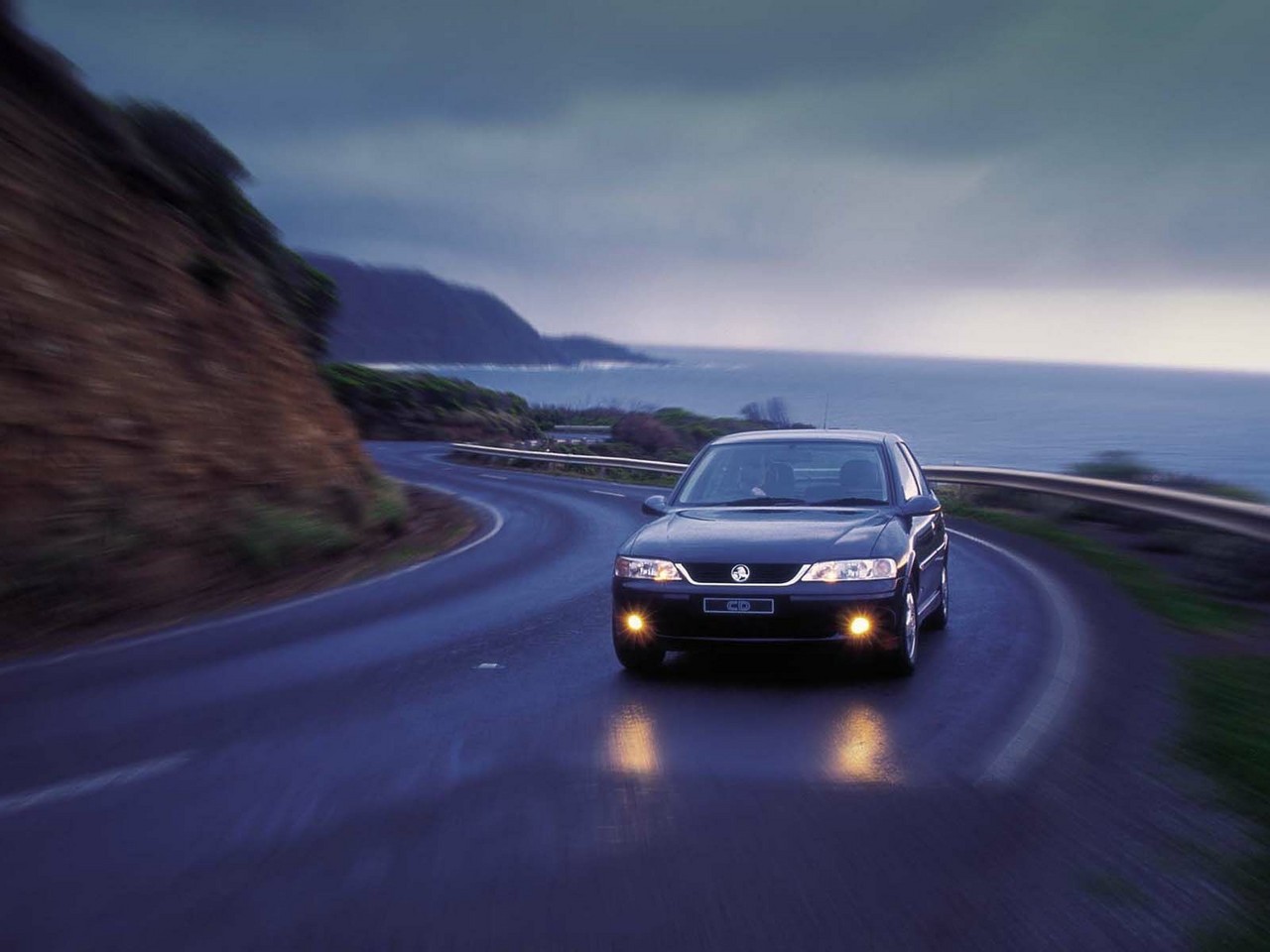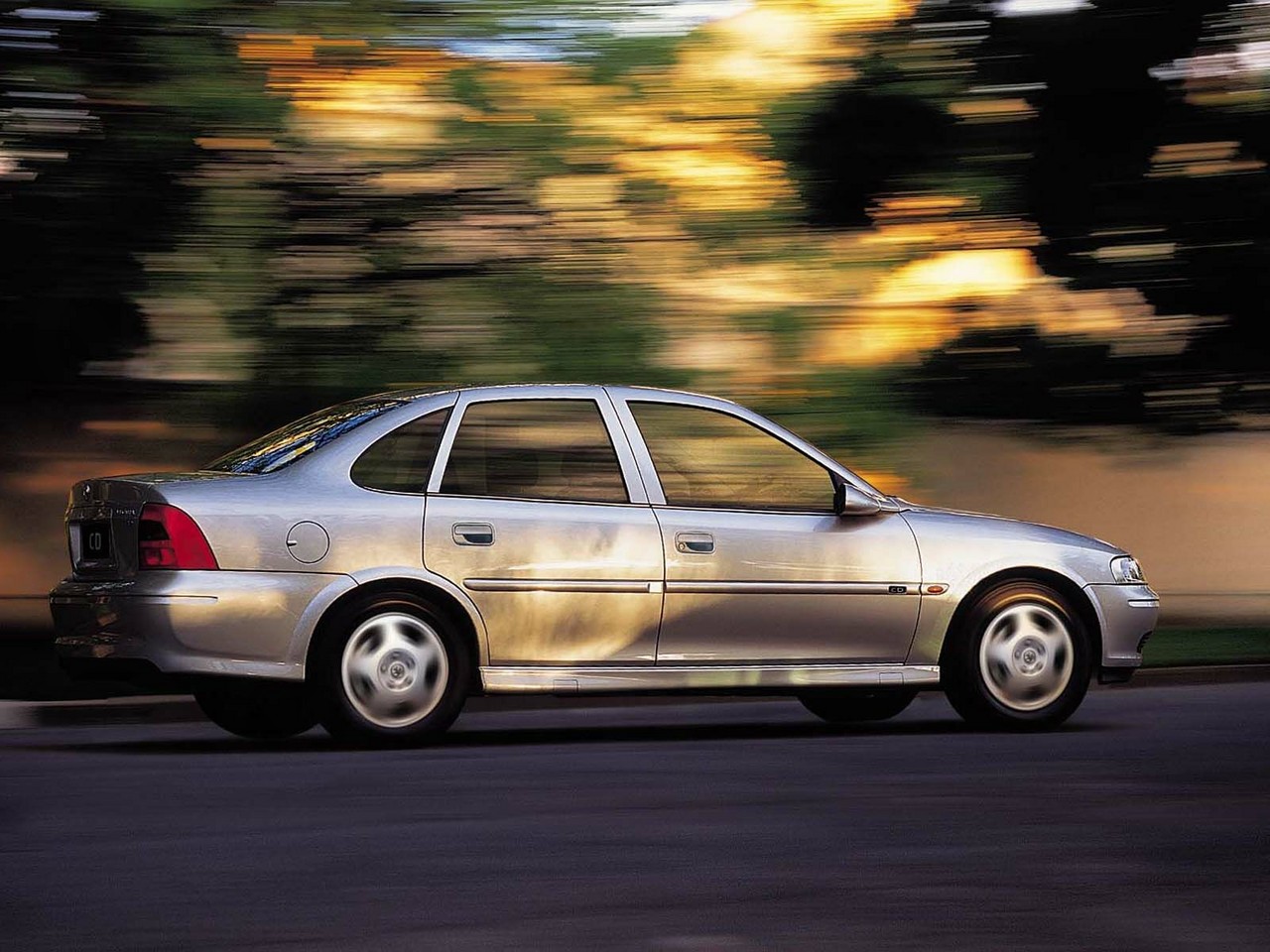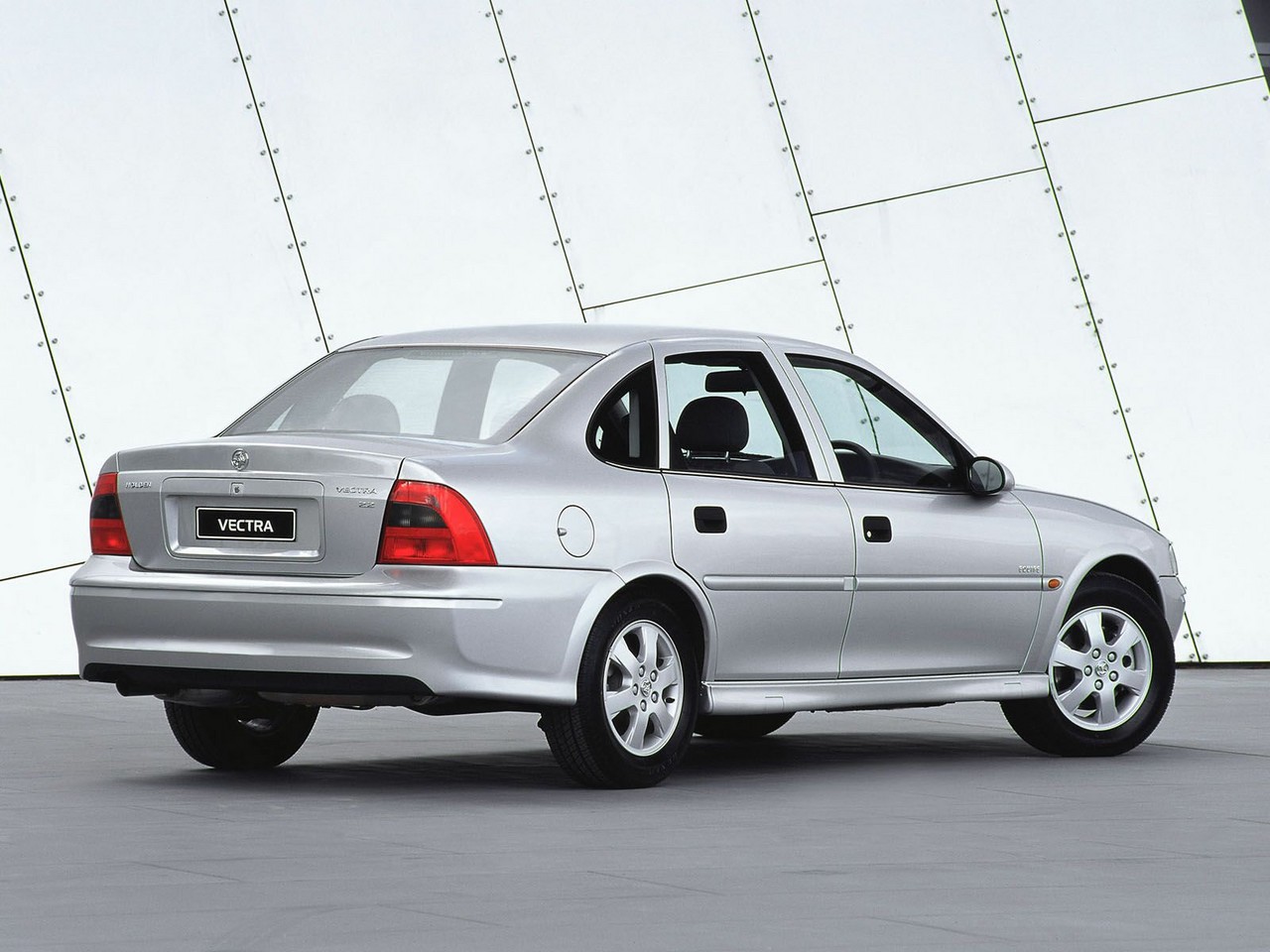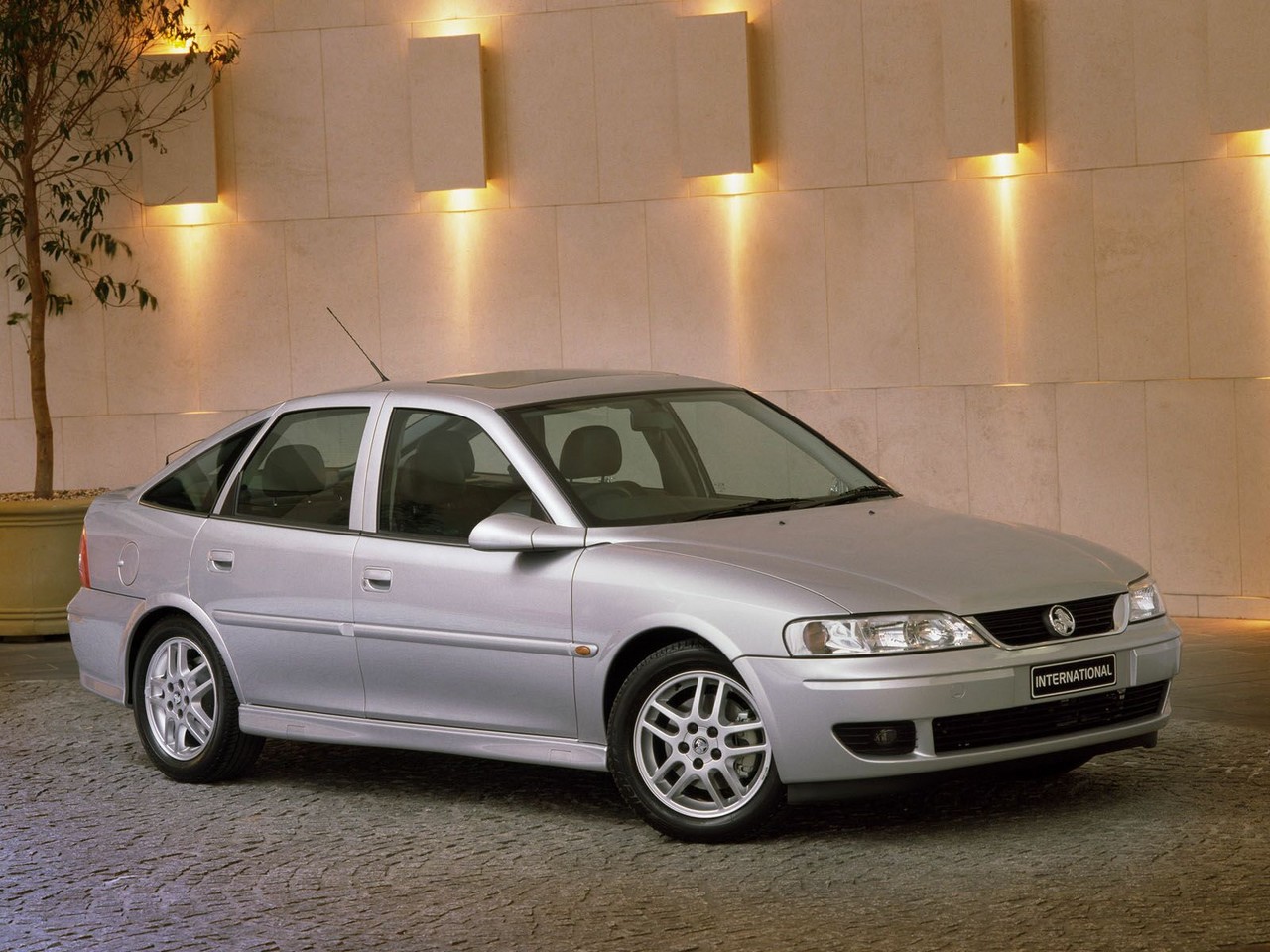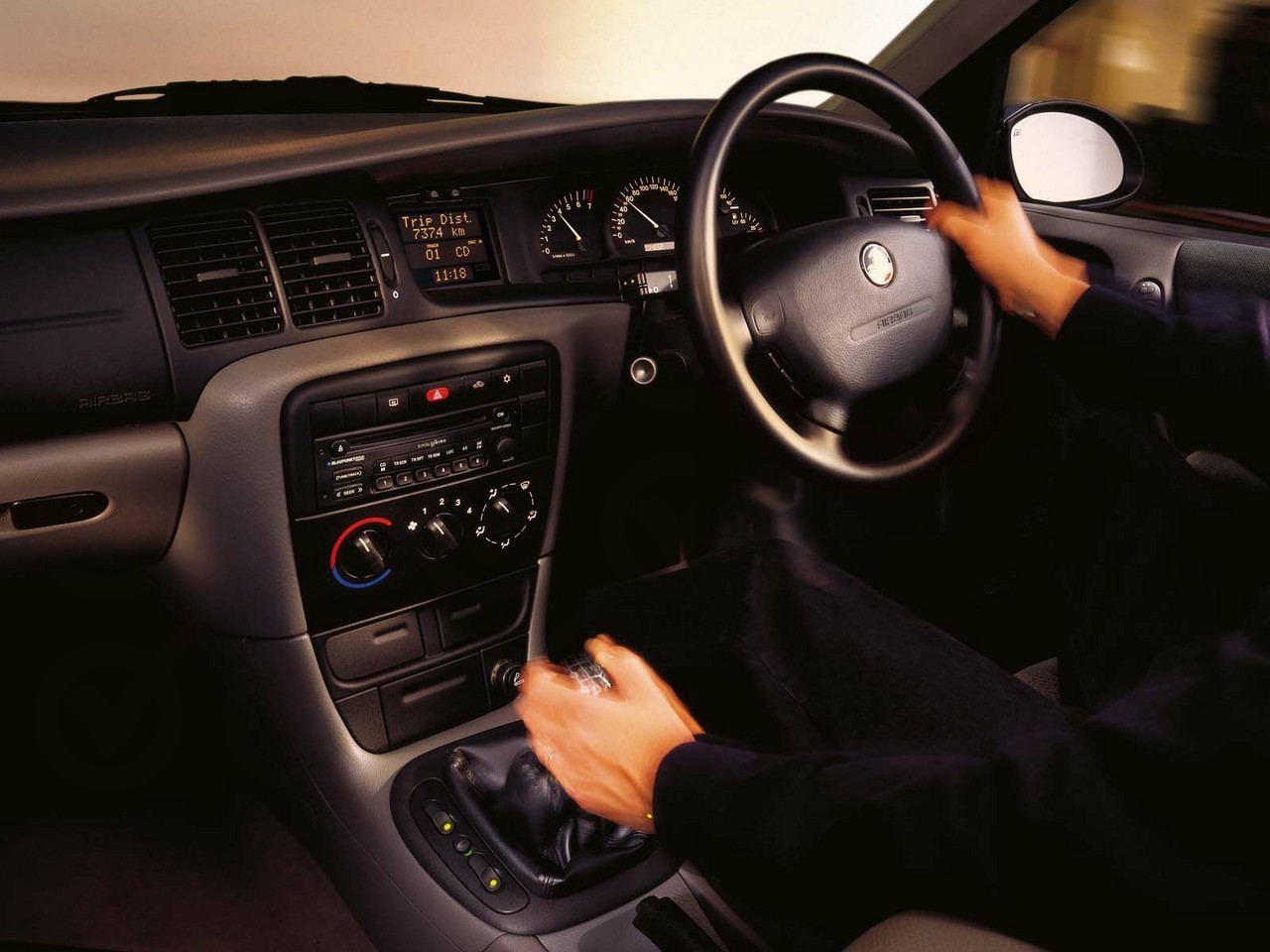
- Willing powertrains
- Refined clutch/gearbox operation
- Good ride/handling balance
- Thick A-pillars impair forward visibility
- For 2.2-litre engine, exhaust resonance under load at low rpm
- Seats lack lateral support
- Limited rear legroom
Review: Holden JS.I Vectra (1998-99)
Overview
Released in August 1998, the Holden JS Series I (JS.I) Vectra was available as a mid-size sedan, wagon or liftback. Within the front-wheel drive JS.I Vectra range, the sedan and wagon were manufactured at Holden’s Elizabeth plant in South Australia, while the liftback continued to be imported from Belgium.
Engines: C20 SEL, C22SEL and X25XE
Of the engines,
- The sedan and wagon were powered by Holden’s 2.2-litre ‘Family II’ C22SEL petrol engine had an iron block, an aluminium cylinder head, double overhead camshafts, four valves per cylinder and a compression ratio of 9.6:1;
- For liftback GL variants, the 2.0-litre C20SEL four-cylinder petrol engine had similar properties to the 2.2-litre C22SEL engine; and,
- For liftback CD variants, the 2.5-litre X25XE V6 petrol engine differed in that it had a compression ratio of 10.8:1.
Transmission options consisted of five-speed manual and four-speed automatic units.
Dimensions
The JS Vectra sedan and liftback were 4477 mm long, 1707 mm wide, 1425 mm tall and had 2637 mm long wheelbases; the JS Vectra wagon, however, was 23 mm longer (at 4490 mm) and 65 mm taller (1490 mm).
Suspension
The JS Vectra had MacPherson strut front suspension and independent rear suspension with upper and lower transverse links. Furthermore, the Australian-built sedans and wagons had unique suspension tuning, cabin trim and Bridgestone tyres that were selected for Australian conditions.
| Body | Variants | Engine | Trans. | Peak power | Peak torque |
|---|---|---|---|---|---|
| Sedan | GL, CD |
2.2-litre petrol I4 | 5sp man., 4sp auto |
104 kW at 5200 rpm | 200 Nm at 4000 rpm |
| Liftback | GL | 2.0-litre petrol I4 | 5sp man., 4sp auto |
100 kW at 5600 rpm | 185 Nm at 4000 rpm |
| CD | 2.5-litre petrol V6 | 4sp auto | 125 kW at 5800 rpm | 230 Nm at 3200 rpm | |
| Wagon | GL | 2.2-litre petrol I4 | 5sp man., 4sp auto |
104 kW at 5200 rpm | 200 Nm at 4000 rpm |
Safety equipment
Standard safety equipment for the Vectra GL included a driver’s airbag and front seatbelt pretensioners; GL liftbacks, however, were also fitted with ABS and traction control.
The Vectra CD variants were fitted with dual front airbags, ABS, traction control and front seatbelt pretensioners as standard.
Features: Vectra GL and CD
Standard features for the Vectra GL included a six speaker sound system with a radio and cassette player, 60/40 split and folding rear seats with a loading-through facility, remote central locking, power mirrors, a height adjustable steering wheel and immobiliser. Wagon models were also fitted with a retractable cargo blind, integrated roof rails and underfloor storage compartments.
The Vectra CD was further equipped with 15-inch alloy wheels, CD player, air conditioning, cruise control, front fog lights, leather-wrapped steering wheel with audio controls, power windows and a trip computer.
Review: Holden JS.II Vectra (1999-03)
Overview
Released in August 1999, the JS Series II (JS.II) Vectra introduced mechanical and cosmetic updates. The 2.2-litre petrol engines were revised for greater low-range torque and were combined with new five-speed Getrag manual transmissions. For the Australian built sedans and wagons, further changes included retuned suspension, a new hydraulic control valve for the power steering for better on-centre feel, and road noise was reduced with new bushings in the rear lower control arms and newly developed tyres.
Visually, the JS.II Vectra could be identified by its jewelled-finish halogen headlights, body-coloured bumpers, chrome grille surrounds, new door sills and larger door mirrors. Inside, there were new grey patterned trims, greater rear seat legroom due to sculpted front seat backrests and a new roof console behind the reading lights.
In November 2000, the range was revised as Australian production of the Vectra was discontinued: wagons and models with 2.0-litre engines were discontinued, while the 2.5-litre inline six cylinder engine was replaced with a 2.6-litre V6 unit (mated to either a four-speed automatic or five-speed Getrag manual transmission). The 2.6-litre V6 engine had a ‘coil over plug’ ignition system for more efficient spark control, revised pistons and a close-couple catalytic converter that reached operating temperature more rapidly. Models with the 2.6-litre V6 engine were also fitted with a unique front fascia with integrated fog lights.
| Body | Variants | Years | Engine | Trans. | Peak power | Peak torque |
|---|---|---|---|---|---|---|
| Sedan | GL, CD |
1999-03 | 2.2-litre petrol I4 | 5sp man., 4sp auto |
104 kW at 5200 rpm | 200 Nm at 4000 rpm |
| CD | 2000-03 | 2.6-litre petrol V6 | 5sp man., 4sp auto |
125 kW at 5800 rpm | 250 Nm at 3600 rpm | |
| Liftback | GL | 1999-00 | 2.0-litre petrol I4 | 5sp man., 4sp auto |
100 kW at 5600 rpm | 185 Nm at 4000 rpm |
| CD | 1999-00 | 2.5-litre petrol V6 | 4sp auto | 125 kW at 5800 rpm | 230 Nm at 3200 rpm | |
| CD | 2000-03 | 2.2-litre petrol I4 | 5sp man., 4sp auto |
104 kW at 5200 rpm | 200 Nm at 4000 rpm | |
| CD | 2000-03 | 2.6-litre petrol V6 | 5sp man., 4sp auto |
125 kW at 5800 rpm | 230 Nm at 3200 rpm | |
| Wagon | GL | 1999-00 | 2.2-litre petrol I4 | 5sp man., 4sp auto |
104 kW at 5200 rpm | 200 Nm at 4000 rpm |
Safety equipment
Compared to their JS.I predecessors, safety equipment was initially unchanged for the JS.II Vectra. From November 2000, however, standard safety equipment was upgraded to include ABS, traction control and active front seat head restraints.
Features
Compared to their JS.I predecessors, features were largely unchanged for the JS.II Vectra.
1999 Vectra Olympic editions
In September 1999, limited-run Olympic editions of the GL sedan and wagon were released. Compared to the standard GL sedan and wagon, the Olympic editions added 15-inch alloy wheels, CD player, air conditioning and ‘Olympic Edition’ badges.
The Olympic editions returned in July 2000; based on the GL sedan, these models were further equipped with 15-inch alloy wheels, air conditioning, power windows and ‘Olympic Edition’ badges.
2001 Vectra Equipe
In March 2001, limited-run Equipe editions of the GL sedan were released. Compared to the standard GL, the Equipe was fitted with six-spoke 15-inch alloy wheels, air conditioning, power windows and ‘Equipe’ badging. The GL Equipe sedan was solely available with a manual transmission. The Equipe editions returned in March 2002, but were also fitted with cruise control and available with automatic transmissions.
2001 Vectra International
In October 2001, limited-run International editions of the CD liftback were released. Compared to the standard CD liftback, the International was further equipped with ten-spoke 16-inch alloy wheels, heated front seats, Ebony Black leather trim, a power sunroof and silver instrument console highlights. The International editions were available in Midnight Black and Star Silver paint finishes.
Related links
- Holden Media Archive: Holden’s Limited Edition Vectra Equipe (March 2001)
- Holden Media Archive: 2002 Holden Vectra Equipe (March 2002)
- Wikipedia.org: Opel Vectra B
